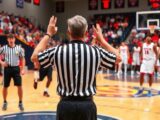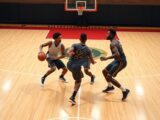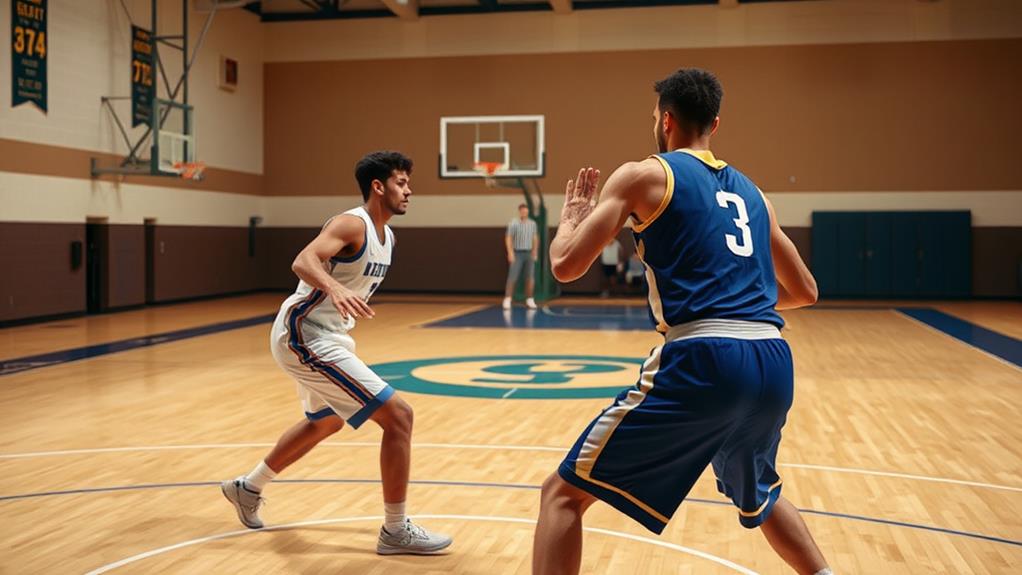
Basketball Defense Tactics: Understanding Drop Coverage
September 25, 2024Drop coverage is an essential defensive tactic in basketball that helps protect the paint and minimizes scoring chances near the basket. It involves the big man dropping back to guard against drives, especially during pick-and-roll situations. As the on-ball defender navigates the screen, clear positioning and effective communication among teammates are important. This strategy is particularly effective against weak shooters and strong rollers. However, it does have its limitations, particularly against skilled mid-range shooters. If you want to explore how to optimize your drop coverage even further, there's plenty more to uncover.
What Is Drop Coverage?
Drop coverage is a key defensive tactic in basketball that focuses on protecting the paint while managing the ball-handler and the screener. In this approach, the defender guarding the screener drops back into the paint, ready to challenge any shots near the rim.
Meanwhile, the on-ball defender typically goes over the screen, guiding the ball-handler away from the basket. This positioning aims to prevent uncontested shots and forces the offensive player setting the screen to make quick decisions.
Defenders must communicate effectively, calling out screens and adjusting their positioning as needed. This teamwork is vital for successful drop coverage in basketball, especially against teams with strong inside scoring threats. By doing so, you can push ball-handlers into taking more difficult mid-range shots instead of easy layups.
However, it's significant to recognize that drop coverage can struggle against elite shooters who excel in pick-and-pop situations. When this happens, the dropping defender's positioning may leave open perimeter shots, allowing the offense to exploit weaknesses.
Balancing these dynamics is essential for effective ball screen coverage, ensuring your defense remains solid and adaptable.
Key Execution Steps
Effective execution of drop coverage relies heavily on immediate communication among defenders as soon as a screen is recognized. To guarantee success, follow these key execution steps:
- On-Ball Defender Movement: The on-ball defender must quickly navigate over the screen to maintain pressure on the ball-handler. This prevents easy access to the basket and allows the defense to exploit any potential scoring opportunities by understanding event rules.
- Defender Positioning: The screener's defender should drop back to protect the paint, anticipating potential drives or inside shots.
- Recovery: After the screen action, the on-ball defender must recover back in front of their man. This is essential for contesting any potential shots effectively.
- Engagement of All Defenders: All five defenders involved must stay engaged and ready to react to offensive movements. This cohesive defensive structure is fundamental for successful drop coverage.
Ideal Situations for Use
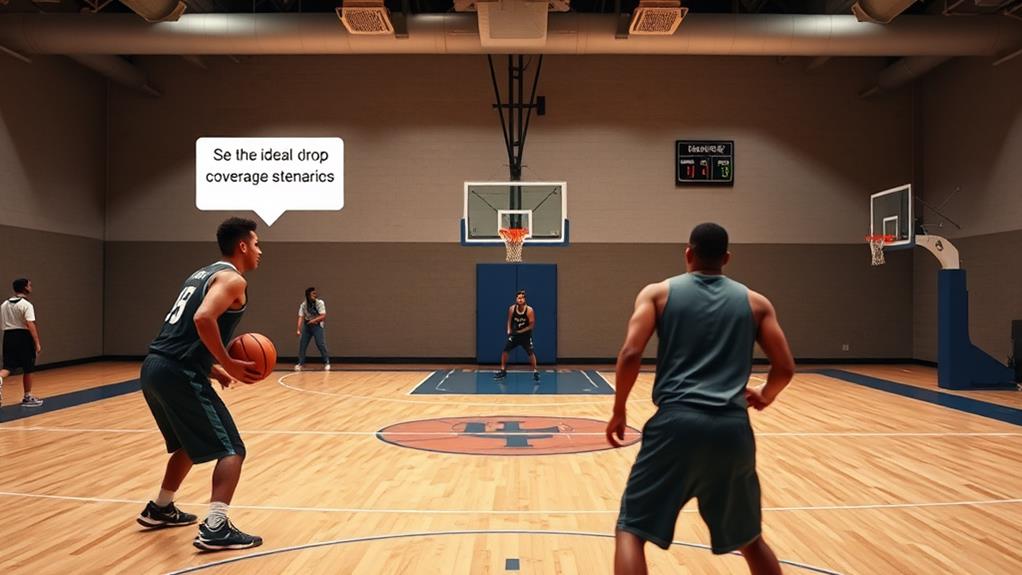
Drop coverage shines when you're up against teams with weak shooters, as it forces them into less favorable mid-range attempts. This tactic not only minimizes scoring opportunities but also promotes teamwork and mutual respect among players, echoing the values of promoting social equality and inclusivity.
It's also effective when guarding strong rollers, allowing you to limit their scoring chances near the basket. By minimizing quick scoring opportunities, you can keep your opponent's offense in check and maintain control of the game.
Effective Against Weak Shooters
When facing a team with weak jump shooters, employing a drop coverage strategy can greatly bolster your defensive efforts. This tactic effectively minimizes scoring opportunities by forcing opponents into challenging mid-range shots, which they may struggle to convert.
Here are some ideal scenarios for using drop coverage:
- Weak Jump Shooters: If your opponents have low shooting percentages, especially from outside, drop coverage can capitalize on their weaknesses.
- Struggling Ball Handlers: Position your defenders to contain ball handlers who lack shooting ability. This keeps them from driving to the basket.
- Limited Outside Shooting Skills: When the screener isn't a threat from the perimeter, drop coverage reduces the risk of open shots.
- Focusing on Rim Protection: By prioritizing contesting shots closer to the rim, you can further deter scoring attempts from less skilled shooters.
Guarding Strong Rollers
Facing strong rollers can pose a significant challenge, especially if they excel at finishing plays near the basket. Utilizing drop coverage is a smart strategy in these situations. By allowing the screener's defender to drop back into the paint, you effectively prevent easy layups while forcing the ball handler to take contested mid-range shots.
Positioning the drop defender closer to the rim limits scoring opportunities for those skilled at rolling to the basket after screens. This tactic works particularly well against teams that frequently employ big men who thrive on these rolls. If the opposing guards aren't proficient shooters, drop coverage becomes even more effective, encouraging low-percentage shots while protecting the rim from strong drives.
Communication and quick reactions among defenders are essential in this setup. As the on-ball defender navigates the screen, make certain everyone is aware of the roller's movements to contain them effectively.
Minimizing Quick Scoring Opportunities
Minimizing quick scoring opportunities is essential for maintaining a strong defensive presence on the court.
To effectively implement drop coverage, focus on these key situations:
- Against teams with poor jump shooting: Drop coverage encourages difficult mid-range attempts while safeguarding the rim.
- When facing strong rollers: If the opposing team has a screener who frequently rolls to the basket, drop coverage allows defenders to prioritize stopping high-percentage shots in the paint.
- Against penetrating guards: This tactic is ideal when you're up against guards who struggle with their shooting. It forces them into challenging shot attempts instead of easy layups.
- With effective communication: All five defenders must stay in sync to execute drop coverage successfully, ensuring each player understands their role in minimizing scoring chances.
Limitations of Drop Coverage
Drop coverage often exposes teams to significant vulnerabilities, particularly against skilled mid-range shooters. When the drop defender retreats to protect the paint, it leaves ample space for shooters to exploit, leading to open shot opportunities. This tactic becomes especially problematic in pick-and-pop situations, where the screener can easily find themselves with an uncontested shot if the defender closes out too slowly.
Additionally, the evolution of defensive strategies, such as prioritizing perimeter defense to counteract modern high-efficiency shooters, highlights the need for teams to adapt their tactics historical shifts in defensive approaches.
Furthermore, committing the drop defender to the ball handler can create mismatches, resulting in increased offensive rebounds for the opposing team. When you focus too much on the ball, you might overlook positioning, allowing opponents to capitalize on second-chance opportunities.
Moreover, drop coverage is particularly ineffective against ball handlers with strong pull-up shooting skills. As you retreat, these players gain favorable looks at the basket, making it challenging to defend effectively.
To minimize these limitations, effective communication and awareness among defenders are essential. Without proper coordination, lapses in coverage can lead to easy baskets for the offense. Being mindful of these weaknesses can help you adjust your defensive strategy accordingly, ensuring your team remains competitive.
Execution Against Pick and Pop
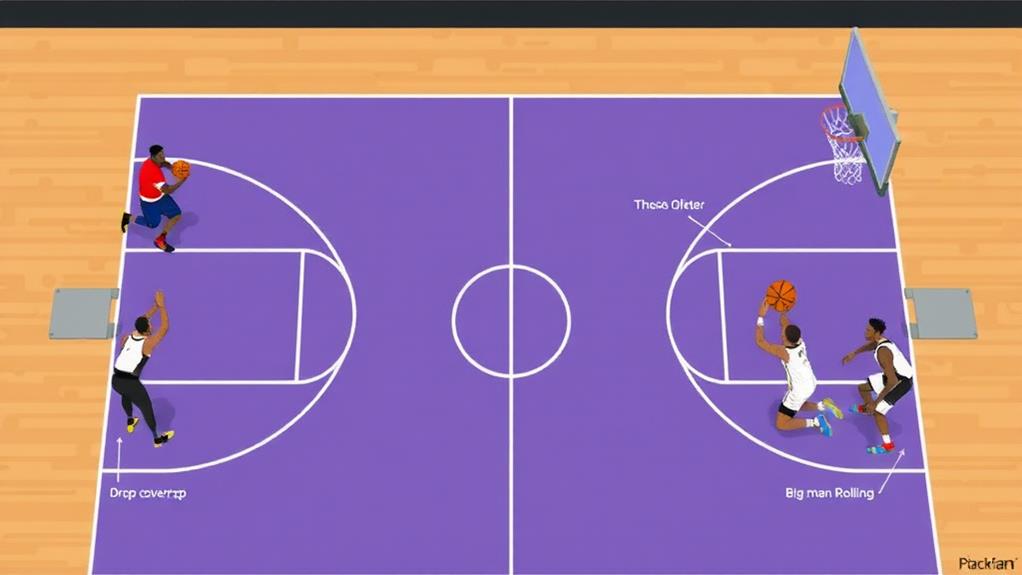
Understanding the vulnerabilities of drop coverage reveals the importance of executing effective strategies against pick-and-pop situations. When facing these scenarios, you need to be proactive. Incorporating data-driven strategies can enhance your team's defensive approach.
Here are four key strategies to enhance your defense:
- Positioning: Verify the drop defender is ready to react as the screener pops out. Quick recovery is vital to contest open perimeter shots.
- Close-out Technique: Train your defenders to close out aggressively. A slow reaction can lead to easy scoring opportunities for the offense.
- Adjustments: If the opposing team regularly employs pick-and-pop plays, consider switching or implementing an aggressive hedge to counteract the drop coverage's weaknesses.
- Utilize Scouting Reports: Identify players who excel at shooting from long range. Tailor your defenders' strategies to focus on these threats.
Effective communication among defenders is essential throughout the game. Make certain everyone understands when to switch or close out, especially after the pick-and-roll action.
Effective Communication Strategies
Effective communication is key to your defensive success on the court. When you call out screens and use clear signals, you help your teammates react quickly and adjust to the play.
Communication on the field, similar to that in soccer, is essential for maintaining proper positioning and supporting teammates during intense moments of the game effective communication strategies.
Clear Callouts and Signals
Communicating clearly on the court is essential for successful basketball defense. When it comes to drop coverage, effective communication can make or break your defensive strategy.
Here are some key tactics to enhance your callouts and signals:
- Immediate Recognition: Call out "screen!" as soon as you spot the impending pick to guarantee all defenders are aware and can adjust quickly.
- Directional Signals: Use specific verbal cues like "screen right" or "screen left" to direct your teammates, facilitating rapid reactions to screens.
- Non-Verbal Communication: Incorporate hand gestures or eye contact, especially in noisy environments, to reinforce your verbal signals and guarantee nothing is missed.
- Consistency in Practice: Develop a communication strategy during practice sessions to build familiarity. This consistency will help your team respond effectively during games.
Timely Reactions and Adjustments
Clear callouts and signals lay the groundwork for timely reactions and adjustments on defense. In drop coverage, effective communication among defensive players is essential. When you recognize a screen, call it out immediately; this prompts quick adjustments and keeps everyone on the same page. Your ability to respond promptly can mean the difference between contesting a shot and allowing an open look.
As the on-ball defender, it's important to navigate the screen and recover quickly. You need to maintain your coverage integrity while contesting shots, preventing offensive players from exploiting any lapses.
Additionally, weak side defenders can utilize stunts to create hesitation in the offense, giving you that extra moment to recover.
Consistent communication about offensive players' positions and their shooting capabilities empowers you and your teammates to adapt dynamically during gameplay. By sharing insights and adjusting strategies in real-time, you enhance your team's defensive efficiency.
Notable Examples in NBA
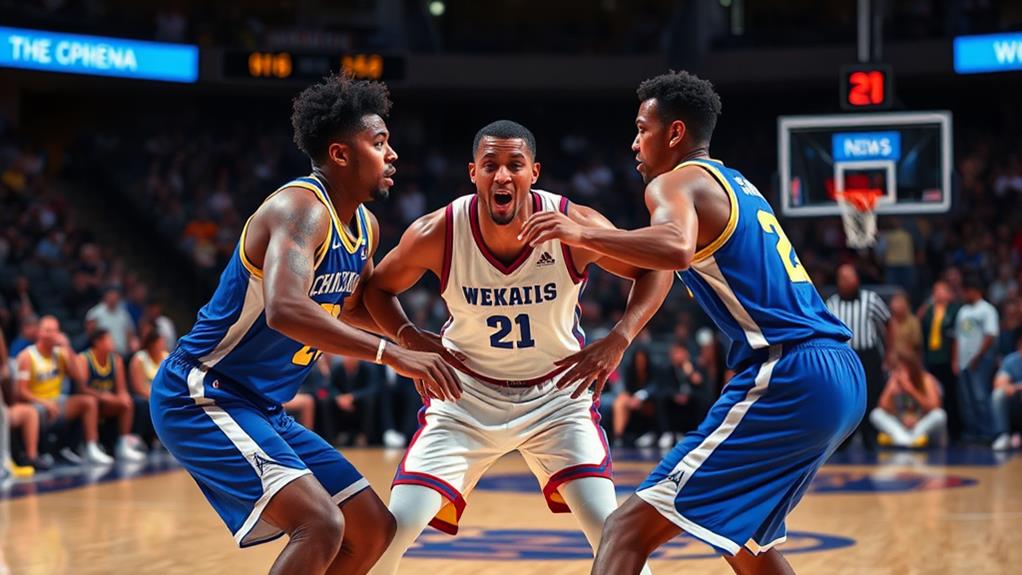
Remarkable Examples in NBA
How have NBA teams successfully implemented drop coverage in their defensive strategies? This tactic has proven effective in limiting high-percentage shots against the opposing team, particularly in pick-and-roll situations. Remarkably, teams have increasingly adopted advanced equipment and material innovation and lightweight design to enhance player performance during these critical defensive plays.
Here are some remarkable examples:
- Boston Celtics: They've utilized drop coverage to protect the rim while allowing mid-range attempts, focusing on defensive solidity.
- Milwaukee Bucks: During the 2021 playoffs, they employed drop coverage against the Brooklyn Nets, containing perimeter shooting threats while pressuring the paint.
- Miami Heat: They've integrated drop coverage into their schemes, especially against pick-and-roll plays, ensuring strong paint presence while contesting shots.
- Los Angeles Lakers: Their versatile bigs executed drop coverage during their 2020 championship run, limiting driving lanes and contesting outside shots effectively.
These teams illustrate how drop coverage can be tailored to fit different defensive needs.
Variations of Drop Coverage
Adapting drop coverage can greatly enhance a team's defensive strategy, allowing for flexibility in responding to various offensive scenarios. One effective variation is "stunting," where off-ball defenders briefly challenge the ball handler. This tactic disrupts their rhythm before the defenders recover to their assignments.
When the screener pops to the perimeter, employing a "drop-and-recover" technique becomes essential. Here, the defender contests open jump shots while still safeguarding the paint.
Another variation is the "soft drop," where the defender drops back slightly less than the traditional 6-10 feet. This approach keeps them closer to the offensive team, enabling them to challenge shots without sacrificing paint protection.
Coordinated switching is yet another effective strategy; if the ball handler drives, the on-ball defender and the screener's defender exchange assignments. This maintains defensive integrity and coverage.
Ultimately, the effectiveness of these drop coverage variations hinges on communication and quick reactions among all five defenders. By staying alert and adaptable, you can effectively respond to offensive movements, minimizing scoring opportunities for the offensive team while maximizing your team's defensive prowess.
Cross-Sport Applications
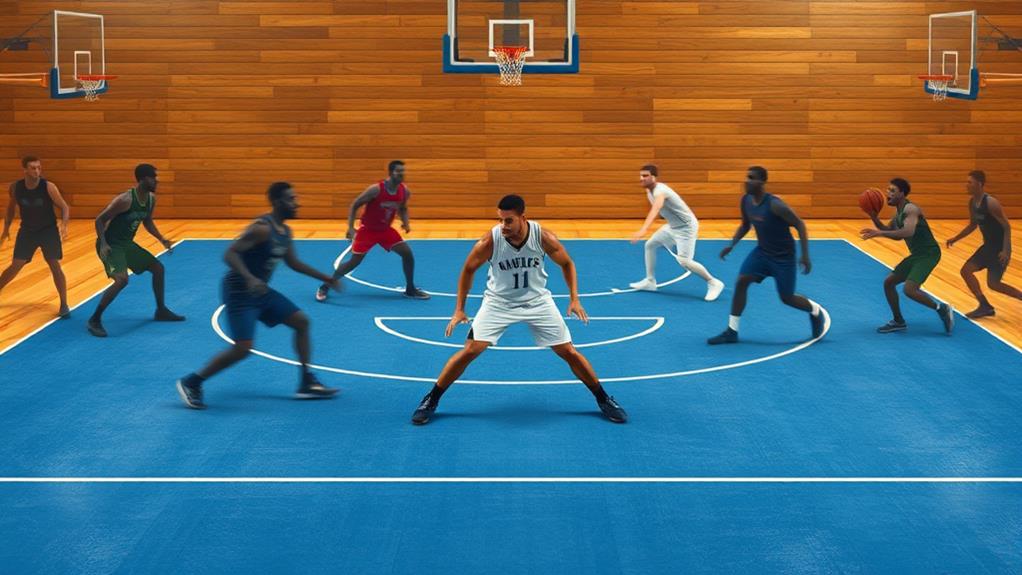
The principles of drop coverage extend beyond basketball, finding valuable applications in sports like lacrosse. In box lacrosse, defenders must anticipate plays and protect high-scoring areas, similar to their basketball counterparts. This requires a strong foundation in endurance training methods to maintain the stamina needed for quick defensive adjustments.
Here's how drop coverage translates effectively across sports:
- Anticipation: Just like in basketball, lacrosse defenders need to read the ballhandler's movements to position themselves effectively.
- Managing Pick-and-Roll: In the National Lacrosse League, teams use drop coverage to handle pick-and-roll situations, emphasizing strategic positioning.
- Communication: Effective drop coverage relies on clear communication among teammates, ensuring all defenders understand their roles and responsibilities.
- Adaptability: Defenders must adjust their strategies based on the offensive players' shooting abilities, whether in basketball or lacrosse.
The versatility of drop coverage highlights its effectiveness in defending against agile players and minimizing scoring chances during high-pressure situations.
By mastering these principles, you can enhance your defensive skills in both sports, making you a more valuable player on the field or court.
Whether you're facing a skilled ballhandler or a dynamic shooter, effective drop coverage can be your key to success.
Conclusion
So there you have it—drop coverage, the beloved tactic that lets your big guy hang out in the paint while the shooter gets a free ticket to the three-point line. Who needs to guard the perimeter, right? Just hope for a miss! But hey, if you want to give your opponents a chance to shine, drop coverage is your go-to strategy. Just remember, in the world of basketball defense, sometimes it's about letting them shoot and praying for a miracle!

